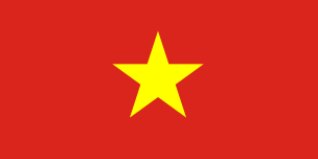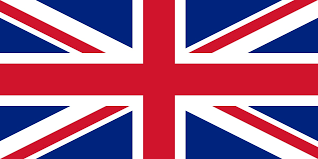The Independence Palace – a unique architectural landmark in the heart of Saigon – is not only an attractive tourist destination but also a silent witness to many of Vietnam’s major historical events. This article will provide detailed insights into its history, cultural significance, and practical tips for visitors. Discover why the Independence Palace stands as a powerful symbol of history and architecture in Ho Chi Minh City.
1. Introduction to Independence Palace
The Independence Palace (also known as the Reunification Palace) in Ho Chi Minh City is one of the most significant landmarks in Vietnam’s modern history. This iconic building served as the presidential palace of South Vietnam until the fall of Saigon in 1975.
Today, it stands as a symbol of the country’s turbulent past and its reunification. Visiting the palace offers a glimpse into Vietnam’s rich historical context, with its well-preserved architecture and exhibitions telling the story of the war and the country’s road to independence.

Step into history at the Independence Palace, where Vietnam’s past and future converge.
1.1. Location
The Independence Palace is located in the heart of Ho Chi Minh City, at 106 Nguyen Du Street, District 1. Situated just a few minutes away from other major attractions such as Ben Thanh Market and Saigon Notre-Dame Cathedral, it’s easily accessible to both tourists and locals. Its central location makes it a perfect starting point for those exploring the city’s vibrant mix of history, culture, and modern development.
1.2. Historical Background
Built in the 1960s, Independence Palace was originally designed by architect Ngo Viet Thu as a residence for the president of South Vietnam. The palace’s significance grew in 1975 when it became the site of the fall of Saigon, as North Vietnamese tanks stormed through its gates, signaling the end of the war and the reunification of the country. Today, the palace remains a symbol of Vietnam’s history of independence and resilience. Its historical importance draws visitors from around the world who wish to understand Vietnam’s struggles and triumphs.
1.3. Map of Independence Palace

The map of Independence Palace shows the main rooms, gardens, and landmarks.
2. Exploring the Architecture of Independence Palace
The architecture of Independence Palace reflects a unique blend of modernist design with traditional Vietnamese elements. Its open, spacious layout invites visitors to explore its many rooms, from the grand meeting halls to the hidden war rooms. The palace’s design is notable for its clean lines, open courtyards, and tranquil gardens, all of which provide a stark contrast to the chaotic events that once took place within these walls.
2.1. Exterior
The exterior of Independence Palace is a striking example of mid-20th-century modernist architecture. The building features clean lines, vast open spaces, and an emphasis on symmetry. The bright white façade is complemented by lush greenery surrounding the structure, creating a peaceful setting that contrasts with its intense historical significance. Visitors are immediately drawn to the large open area in front of the building, where a helicopter pad remains as a reminder of the tumultuous past.

The serene exterior of the Independence Palace belies the intense history it houses within its walls.
2.2. Interior
Inside, Independence Palace offers a glimpse into the life of the South Vietnamese elite, with rooms designed for government functions, entertainment, and private affairs. Visitors can explore the President’s office, meeting rooms, and conference halls, all of which retain their original décor. The War Room on the second floor is particularly interesting, where you can view the map of Saigon’s battlefronts as well as a detailed model of the city’s defenses. The interior is a fascinating mix of grand style and military functionality, reflecting the dual purpose of the building as both a presidential palace and a command center during the war.

Step inside to witness the Independence Palace‘s blend of grand political spaces and wartime function.
3. What to See at Independence Palace
As one of Ho Chi Minh City’s must-see places, the Independence Palace is filled with fascinating artifacts, historical relics, and rooms that transport you back to a pivotal moment in Vietnam’s history. Whether you’re an enthusiast of modern history or architecture, there’s something for everyone to appreciate here.
3.1. Historical Relics
The Independence Palace is home to several historical relics that showcase Vietnam’s war history. Visitors can see original furniture and objects used by South Vietnam’s leaders, including the presidential office desk and the telephone switchboard used to communicate during critical moments of the war. Each room is meticulously preserved to give visitors a glimpse into the political climate of the time.

Explore historical relics that tell the story of Vietnam’s battle for independence.
3.2. Artworks
The palace also features numerous artworks, some depicting the country’s struggle during the war, others showcasing Vietnam’s national pride. Visitors can find paintings, murals, and sculptures throughout the building, many of which highlight themes of unity, peace, and resilience. These works provide a cultural context to the historical events that took place within the palace walls.
>> Read more: Cu Chi Tunnels Travel Guide: Top Things to Do & Tips
3.3. The Tank That Crashed Through the Gate in 1975
One of the most iconic displays inside the Independence Palace is the tank that famously crashed through its gates in 1975. The image of this tank, which marks the fall of Saigon and the end of the war, is a powerful reminder of the palace’s historic significance. Visitors can see the tank up close, alongside photos and records of the event, creating a poignant moment of reflection.

Relive the moment of Saigon’s fall with the tank that crashed through the gates of Independence Palace in 1975.
4. Visitor Tips for First-Time Travelers
Before you set out to visit Independence Palace, here are a few tips to make your experience even better:
4.1. How to Get to Independence Palace
Independence Palace is centrally located in Ho Chi Minh City, making it easy to reach by taxi, motorbike, or even on foot if you are staying in the city center. It is within walking distance of other Ho Chi Minh City attractions such as Ben Thanh Market and the Saigon Notre-Dame Cathedral. If you’re unsure, HoaBinh Tourist offers a convenient and guided Ho Chi Minh City tour that includes transportation and a knowledgeable guide.

Getting to Independence Palace is easy, and we’re here to ensure your visit is seamless.
4.2. Opening Hours and Entrance Fee
The palace is open daily from 7:30 AM to 6:00 PM, with the last entry at 5:00 PM. The entrance fee is modest, with discounts available for students and Vietnamese citizens. A ticket includes access to all areas of the palace, including the underground bunker and war rooms.
5. Suggested Tours to Visit Independence Palace with HoaBinh Tourist
As part of the Vietnam: Timeless Journey – Endless Love tourism campaign for 2025, Vietnam is offering visa exemptions for tourists from Poland, the Czech Republic, and Switzerland. This initiative aims to make it easier for international visitors from these countries to explore the beauty and history of Vietnam, including iconic landmarks like Independence Palace. This is a great opportunity for travelers to experience the rich culture, vibrant history, and stunning landscapes that Vietnam has to offer.
HoaBinh Tourist is excited to provide a range of tailored tours that make exploring Vietnam easier than ever. Whether you’re visiting the Independence Palace, experiencing Ho Chi Minh City’s culture, our expert guides will ensure you have a memorable and hassle-free journey.
With HoaBinh Tourist’s all-in-one travel service, we offer:
- Private cars from 7 to 45 seats, including VIP limousine pick-up
- Flexible flight ticket booking at the best prices
- 5-star accommodation for perfect relaxation throughout your trip
Explore Independence Palace and the Ho Chi Minh City tours beyond with the comfort and expertise of HoaBinh Tourist:
- Full Day Ho Chi Minh City & Cu Chi Tunnels Tour
- Ho Chi Minh City Half Day Tour
- Ho Chi Minh City Tour Full Day
Let HoaBinh Tourist guide you to Independence Palace and other top attractions in Ho Chi Minh City with ease and comfort.















